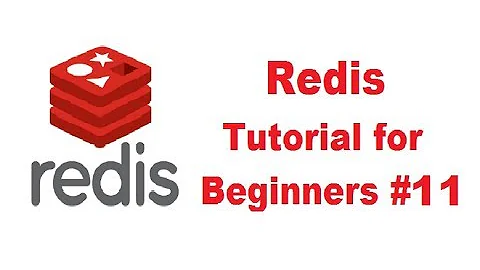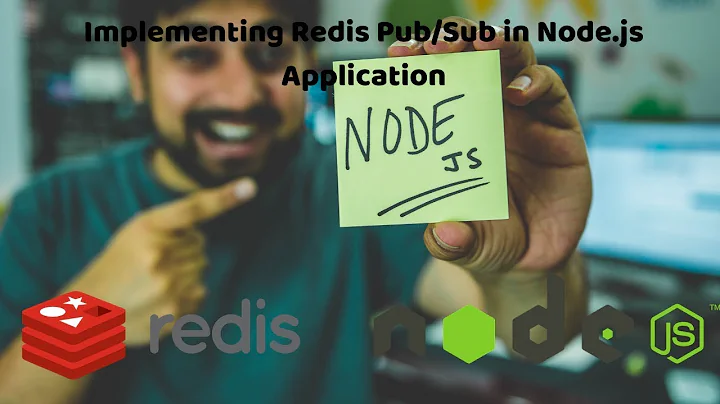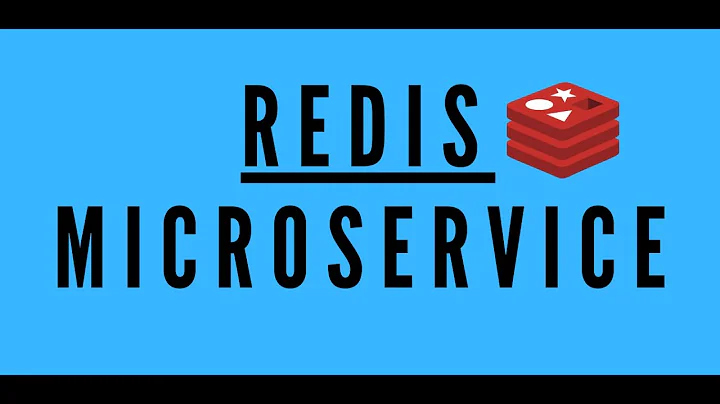How to use redis PUBLISH/SUBSCRIBE with nodejs to notify clients when data values change?
Solution 1
OLD only use a reference
Dependencies
uses express, socket.io, node_redis and last but not least the sample code from media fire.
Install node.js+npm(as non root)
First you should(if you have not done this yet) install node.js+npm in 30 seconds (the right way because you should NOT run npm as root):
echo 'export PATH=$HOME/local/bin:$PATH' >> ~/.bashrc
. ~/.bashrc
mkdir ~/local
mkdir ~/node-latest-install
cd ~/node-latest-install
curl http://nodejs.org/dist/node-latest.tar.gz | tar xz --strip-components=1
./configure --prefix=~/local
make install # ok, fine, this step probably takes more than 30 seconds...
curl http://npmjs.org/install.sh | sh
Install dependencies
After you installed node+npm you should install dependencies by issuing:
npm install express
npm install socket.io
npm install hiredis redis # hiredis to use c binding for redis => FAST :)
Download sample
You can download complete sample from mediafire.
Unzip package
unzip pbsb.zip # can also do via graphical interface if you prefer.
What's inside zip
./app.js
const PORT = 3000;
const HOST = 'localhost';
var express = require('express');
var app = module.exports = express.createServer();
app.use(express.staticProvider(__dirname + '/public'));
const redis = require('redis');
const client = redis.createClient();
const io = require('socket.io');
if (!module.parent) {
app.listen(PORT, HOST);
console.log("Express server listening on port %d", app.address().port)
const socket = io.listen(app);
socket.on('connection', function(client) {
const subscribe = redis.createClient();
subscribe.subscribe('pubsub'); // listen to messages from channel pubsub
subscribe.on("message", function(channel, message) {
client.send(message);
});
client.on('message', function(msg) {
});
client.on('disconnect', function() {
subscribe.quit();
});
});
}
./public/index.html
<html>
<head>
<title>PubSub</title>
<script src="/socket.io/socket.io.js"></script>
<script src="/javascripts/jquery-1.4.3.min.js"></script>
</head>
<body>
<div id="content"></div>
<script>
$(document).ready(function() {
var socket = new io.Socket('localhost', {port: 3000, rememberTransport: false/*, transports: ['xhr-polling']*/});
var content = $('#content');
socket.on('connect', function() {
});
socket.on('message', function(message){
content.prepend(message + '<br />');
}) ;
socket.on('disconnect', function() {
console.log('disconnected');
content.html("<b>Disconnected!</b>");
});
socket.connect();
});
</script>
</body>
</html>
Start server
cd pbsb
node app.js
Start browser
Best if you start google chrome(because of websockets support, but not necessary). Visit http://localhost:3000 to see sample(in the beginning you don't see anything but PubSub as title).
But on publish to channel pubsub you should see a message. Below we publish "Hello world!" to the browser.
From ./redis-cli
publish pubsub "Hello world!"
Solution 2
here's a simplified example without as many dependencies.
You do still need to npm install hiredis redis
The node JavaScript:
var redis = require("redis"),
client = redis.createClient();
client.subscribe("pubsub");
client.on("message", function(channel, message){
console.log(channel + ": " + message);
});
...put that in a pubsub.js file and run node pubsub.js
in redis-cli:
redis> publish pubsub "Hello Wonky!"
(integer) 1
which should display: pubsub: Hello Wonky! in the terminal running node!
Congrats!
Additional 4/23/2013: I also want to make note that when a client subscribes to a pub/sub channel it goes into subscriber mode and is limited to subscriber commands. You'll just need to create additional instances of redis clients. client1 = redis.createClient(), client2 = redis.createClient() so one can be in subscriber mode and the other can issue regular DB commands.
Solution 3
Complete Redis Pub/Sub Example (Real-time Chat using Hapi.js & Socket.io)
We were trying to understand Redis Publish/Subscribe ("Pub/Sub") and all the existing examples were either outdated, too simple or had no tests. So we wrote a Complete Real-time Chat using Hapi.js + Socket.io + Redis Pub/Sub Example with End-to-End Tests!
The Pub/Sub component is only a few lines of node.js code: https://github.com/dwyl/hapi-socketio-redis-chat-example/blob/master/lib/chat.js#L33-L40
Rather than pasting it here (without any context) we encourage you to checkout/try the example.
We built it using Hapi.js but the chat.js file is de-coupled from Hapi and can easily be used with a basic node.js http server or express (etc.)
Solution 4
Handle redis errors to stop nodejs from exiting. You can do this by writing;
subcribe.on("error", function(){
//Deal with error
})
I think you get the exception because you are using the same client which is subscribed to publish messages. Create a separate client for publishing messages and that could solve your problem.
Solution 5
Check out acani-node on GitHub, especially the file acani-node-server.js. If these links are broken, look for acani-chat-server among acani's GitHub public repositories.
Related videos on Youtube
Comments
-
guilin 桂林 almost 4 years
I'm writing an event-driven publish/subscribe application with NodeJS and Redis. I need an example of how to notify web clients when the data values in Redis change.
-
PaulM almost 13 yearsWow, this looks pretty sweet!
-
Akasha about 12 yearswhy do you need
const client = redis.createClient()in the root of app.js? -
Alfred about 12 yearsyou don't need to use const at all. var could be used as well and maybe I should have instead because const is only available in the newer javascript engines. Furthermore this line ensures we are connected to redis server which we use in this example.
-
x_maras almost 12 years@Alfred I tried your example and it seems that it never goes in the socket.on('connection', function(client) { block. I tried to print something there and never does. if I remove this part I can normally publish and see the message in the console. Also when I run pubsub.js the following are printed on the console: Express server listening on port3000 info - socket.io started Do you maybe have an idea of what might be wrong in my case?
-
Alfred almost 12 yearsThe sample is very old so not up to date with latest socket.io/express modules and maybe even node.js. I would try to update code. There is also another huge problem with this code that it opens another redis connection for each connected user. That should only be on instead. I have to work first, but after that I try to update the code.
-
x_maras almost 12 years@Alfred I think that I managed to fixed it. Not sure if my code is good (it's my second day that I work with node.js). I 've put it on github(I wanted to play a little bit with it as well) github.com/dinostheo/redis_pbsb_node.js_socket.io_Hello_world
-
Alfred almost 12 yearsVery good. I still think there is room for some improvements which when I have time I will put online. But right now I am really working hard :$.
-
x_maras about 11 years@Imme22009 Sorry but I haven't done anything on this since then github.com/dinostheo/redis_node_pbsb
-
zubinmehta almost 9 yearsI think subscribe.on should be outside the socket.on('connection') block to avoid multiple subscribes/
-
IshaS almost 9 yearsHere when we add data to the redis, should I run publish pubsub to get notification of insert?
-
nak almost 9 years@IshaS if that's what you need to do, yes. You should also look into transactions if you need to run multiple commands atomically: redis.io/commands/exec
-
 Gixty almost 9 yearsdo you have this example with express?
Gixty almost 9 yearsdo you have this example with express? -
nelsonic almost 9 years@Gixty we wrote the example using Hapi.js because all the other examples out there use Express.js ... as mentioned in the post, its trivial to port it to any other Node.js framework (simply pass in the express app/listener to the chat.js init code) and it works exactly the same. p.s: if you are new to Hapi.js see: github.com/nelsonic/learn-hapi
-
 Manjeet almost 7 years@nak This worked like charm in one GO :) Some users may need to install 'double-ended-queue' if not installed already.
Manjeet almost 7 years@nak This worked like charm in one GO :) Some users may need to install 'double-ended-queue' if not installed already. -
Phantom007 over 5 yearsWhy did you emphasize not to install npm as root?
-
Liosha Bakoushin about 4 yearsIt also worth to mention that if you want to use wildcards, for example, subscribe to
pubsub/*just addpto the example: replacesubscibewithpsubscribeandmessagewithpmessage.





